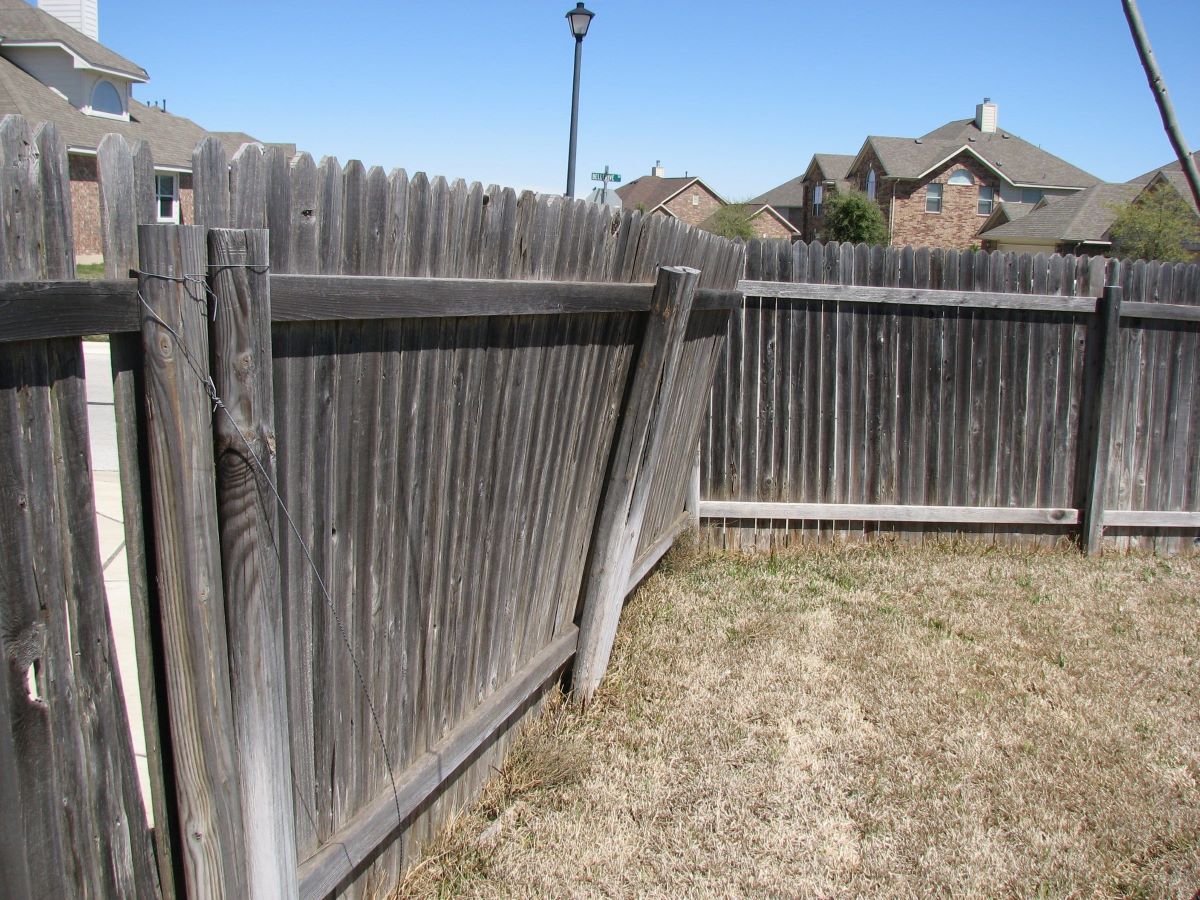

Articles
How To Replace Wood Fence
Modified: February 23, 2024
Learn how to replace a wood fence with our informative articles. Gain valuable insights and step-by-step guidance for a successful fence replacement project.
(Many of the links in this article redirect to a specific reviewed product. Your purchase of these products through affiliate links helps to generate commission for Storables.com, at no extra cost. Learn more)
Introduction
A wood fence can add beauty, privacy, and security to any property. However, over time, the harsh elements can take a toll on the wood, causing it to deteriorate and become weak. If you’ve noticed that your wood fence is in need of repair or outright replacement, then you’ve come to the right place.
In this article, we will guide you through the process of replacing a wood fence, from assessing the condition of the existing fence to selecting the right materials and installing the new fence. Whether you’re a DIY enthusiast or a homeowner looking to save money on hiring a professional, this step-by-step guide will equip you with the necessary skills and knowledge to tackle this project with confidence.
Assessing the condition of your wood fence is the first step in determining whether repair or replacement is necessary. Inspect the entire fence, paying close attention to signs of decay or damage such as rotten or broken panels, loose or missing posts, and sagging sections. If the damage is limited to a few isolated areas, you may be able to repair the fence. However, if the damage is widespread or if the fence is structurally compromised, it’s best to replace it entirely.
Before you dive into the replacement process, it’s important to gather the necessary tools and materials. Some commonly needed tools include a hammer, screwdriver, circular saw, level, tape measure, and post hole digger. Additionally, you’ll need new fence panels, fence posts, and appropriate fasteners. It’s crucial to choose high-quality materials that are suitable for outdoor use and can withstand the elements for years to come.
Removing the old fence is often the most labor-intensive part of the process. Start by removing any nails or screws that secure the panels and posts. Carefully dismantle the panels and stack them neatly for disposal. Use a pry bar or shovel to remove the old fence posts from the ground. Be cautious when doing this to avoid damaging the surrounding area or underground utilities.
Preparing the ground for the new fence involves clearing away debris and leveling the area. Remove any rocks, weeds, or obstructions that could interfere with the installation. Use a level to ensure the ground is even and adjust as needed. Clearing and leveling the ground will provide a solid foundation for the new fence and help prevent future issues.
Key Takeaways:
- Assess the condition of your wood fence to determine whether repair or replacement is necessary. Thoroughly inspect for decay, damage, and structural stability to make an informed decision.
- Choose high-quality materials and proper tools for the replacement process. Select durable wood, gather essential tools, and prepare the ground for a successful and long-lasting fence installation.
Read more: How To Maintain A Wood Fence
Assessing the Condition of the Wood Fence
Before embarking on the project of replacing your wood fence, it’s essential to thoroughly assess the condition of the existing fence. This step will help you determine whether repair or replacement is necessary.
Start by inspecting the entire fence, paying close attention to any signs of damage or decay. Look for rotten or broken panels, loose or missing posts, and sagging sections. Check for any signs of insect infestation or mold growth, as these can further weaken the wood and compromise the fence’s structural integrity.
If you notice only minor damage, such as a few cracked or loose boards, you may be able to repair the fence rather than replacing it entirely. Small repairs can be done by replacing individual boards or reinforcing weak sections with additional screws or nails. However, if the damage is extensive or the fence is significantly aged, it may be more cost-effective and practical to replace the entire fence.
When assessing the condition of the wood, pay attention to the type of wood used in the fence. Some types, such as cedar or redwood, are naturally resistant to decay and insects, and may require less maintenance or replacement. However, other common types of wood, like pine or spruce, are more susceptible to damage and may need more frequent repairs or replacement.
Consider the overall structural stability of the fence. Ensure that the posts are firmly planted in the ground and not leaning or wobbly. Check for any signs of rot or decay at the base of the posts, as this can compromise the entire fence’s stability. If you notice any critical structural issues, it’s crucial to address them promptly to prevent further damage or safety hazards.
In some cases, the damage may be beyond repair. If the fence has suffered extensive rot, termite damage, or has been severely weathered, it may be more practical to invest in a new fence. Replacement will not only enhance the appearance of your property but also provide a strong and durable barrier for privacy and security.
Assessing the condition of your wood fence is an important step in determining the best course of action. Whether you choose to repair or replace, it’s crucial to prioritize the safety and longevity of your fence. By thoroughly inspecting the wood and addressing any issues, you can ensure that your new fence will stand the test of time and serve its purpose for many years to come.
Gathering the Necessary Tools and Materials
Once you have assessed the condition of your wood fence and determined that replacement is necessary, it’s time to gather the necessary tools and materials for the project. Having the right equipment on hand will ensure a smooth and efficient fence replacement process.
Here are some essential tools you will need:
- Hammer: A hammer will be used to remove nails and dismantle the old fence.
- Screwdriver: A screwdriver is necessary for removing screws that secure the fence panels.
- Circular saw: A circular saw will come in handy when cutting new fence panels to size.
- Level: A level is essential for ensuring that the fence panels and posts are properly aligned.
- Tape measure: A tape measure is needed for taking accurate measurements for the new fence panels and posts.
- Post hole digger: If you’re replacing the fence posts, a post hole digger will be necessary to dig the holes for the new posts.
In addition to the tools, you will also need the following materials:
- New fence panels: Measure the length and height of the old fence panels to determine the size of the new ones you need.
- Fence posts: If the existing fence posts are in good condition, you may be able to reuse them. However, if they are damaged or not suitable for the new fence, you will need new fence posts.
- Appropriate fasteners: Depending on the type of fence panels and posts you choose, you will need nails, screws, or brackets to secure them together.
When selecting materials, it’s crucial to choose high-quality options that are specifically designed for outdoor use. Opt for pressure-treated or naturally rot-resistant wood, such as cedar or redwood, that can withstand the elements and ensure the longevity of your new fence.
Before starting the project, make sure you have all the necessary tools and materials readily available. This will save you time and allow for a smoother replacement process. Gather everything you need in one place, ensuring that all tools are in good working condition and that you have enough materials to complete the project.
By being well-prepared and having the right tools and materials, you’ll be able to tackle the fence replacement project with confidence and achieve a successful outcome.
Removing the Old Fence
Once you have gathered all the necessary tools and materials, it’s time to start the process of removing the old fence. This step is crucial to make way for the installation of the new fence.
First, start by removing any nails or screws that secure the fence panels to the posts. Use a hammer or screwdriver to carefully pry them out. Take care to avoid damaging the panels or nearby structures during this process.
Once the panels are detached, stack them neatly for disposal or potential reuse if they are in good condition. This will make it easier to keep the work area clean and organized.
Next, move on to the fence posts. If the posts are in good condition and you plan to reuse them, you’ll need to remove them from the ground. Use a shovel or pry bar to dig around the base of the posts and loosen the soil. Apply steady pressure and leverage to pull the posts out of the ground. Be cautious when doing this to prevent damaging the surrounding area or any underground utilities.
If the posts are damaged or not suitable for reuse, you can cut them off at ground level using a reciprocating saw or a circular saw. This will allow you to easily remove the old posts without disturbing the ground or causing unnecessary excavation.
As you remove the old fence, be sure to wear appropriate safety gear, such as gloves and goggles, to protect yourself from any potential hazards like splinters or flying debris.
Dispose of the old fence materials responsibly. If your local waste management facility accepts bulky items, you can arrange for them to be picked up or taken to a designated drop-off point. Alternatively, you could contact local recycling companies to inquire about recycling any salvageable materials.
Removing the old fence is an important step in the fence replacement process. By clearing the area and preparing it for the installation of the new fence, you are setting the foundation for a successful project that will enhance the appearance and functionality of your property.
Preparing the Ground for the New Fence
Preparing the ground is a crucial step in ensuring the stability and longevity of your new fence. Properly cleared and leveled ground will provide a solid foundation for the fence installation and help prevent future issues, such as uneven panels or posts.
Here are the necessary steps to prepare the ground for the new fence:
Read more: How To Repair Wood Fence
Clearing the Area
Start by removing any debris, rocks, or vegetation from the area where the new fence will be installed. Clearing the area will allow for a clean and even surface for the fence panels and posts.
Dispose of any large rocks or obstacles that could interfere with the installation process. Clearing away vegetation, such as grass or weeds, will prevent them from growing through or around the new fence.
Leveling the Ground
Next, ensure that the ground is level to promote the proper alignment and stability of the new fence. Use a level tool, such as a carpenter’s level or a laser level, to check the evenness of the ground.
If you notice any uneven spots, use a shovel or rake to level the surface. Fill in any depressions with soil, and tamp it down firmly to create a compact and stable base. Similarly, remove excess soil from any high areas to create a smooth and even surface.
Leveling the ground will provide a solid and stable base for the new fence, preventing issues such as leaning or sagging panels.
Locating Underground Utilities
Before digging any holes for the new fence posts, it’s crucial to locate any underground utilities to avoid damaging them. Contact your local utility companies to request a utility marking service. They will send a technician to mark the location of any buried utilities, such as water pipes, gas lines, or electrical cables, based on the information you provide.
Be sure to respect and abide by the markings to ensure a safe and accident-free installation process.
Marking the Fence Layout
Once the ground is cleared and leveled, use chalk or string to mark the layout of the new fence. This will help you visualize the placement of the fence panels and posts.
Measure the desired spacing between the fence panels and ensure that the lines are straight and properly aligned. This step will help maintain a consistent and visually appealing appearance for the new fence.
Preparing the ground for the new fence is an important step that lays the foundation for a successful installation. By clearing away debris, leveling the ground, locating underground utilities, and marking the fence layout, you are setting the stage for a sturdy and aesthetically pleasing fence that will enhance your property for years to come.
Read more: How Much To Replace A Fence
Choosing the Right Type of Wood for the Replacement
When it comes to replacing a wood fence, choosing the right type of wood is crucial for the longevity and aesthetic appeal of your new fence. Different types of wood have varying levels of durability, resistance to rot and decay, and overall maintenance requirements.
Here are some factors to consider when selecting the right type of wood for your fence replacement:
Durability and Resistance
Opt for a wood species that is naturally resistant to rot, decay, and insect infestation. Some popular choices include cedar, redwood, and cypress. These types of wood contain natural oils and resins that act as a barrier against moisture and pests, making them durable and long-lasting.
On the other hand, softer woods like pine or spruce are less resistant to decay and may require additional treatment or regular maintenance to prolong their lifespan.
Aesthetics
The appearance of your fence plays a significant role in enhancing the overall look of your property. Choose a wood species that complements the style of your home and outdoor environment.
Cedar and redwood are known for their attractive natural color and rich grain patterns. These woods tend to age well and acquire a beautiful silver-gray patina over time if left untreated.
Alternatively, if you prefer a painted or stained finish, select a wood species that takes well to these treatments and allows you to achieve your desired look.
Maintenance
Consider the level of maintenance required for your chosen wood species. Some types of wood, like cedar and redwood, require minimal maintenance and can be left untreated while still maintaining their durability and beauty.
Other woods may require regular resealing or staining to protect them from the elements and prevent decay. Taking the time to maintain your fence properly will extend its lifespan and keep it looking its best.
Read more: What Is The Best Wood For A Fence
Budget
Finally, consider your budget when selecting the type of wood for your fence replacement. Prices can vary depending on the availability and quality of the wood species. Exotic and highly durable woods may come at a higher cost, while more common woods like pine or spruce may be more budget-friendly.
However, it’s important to keep in mind that investing in higher-quality wood upfront can save you money in the long run by reducing the need for frequent repairs or premature replacement.
Take your time to research and compare different wood species, considering their durability, aesthetics, maintenance requirements, and cost. Consulting with a professional or local supplier can also provide valuable insights and help you make an informed decision.
By choosing the right type of wood for your fence replacement, you can enjoy a durable, visually appealing, and low-maintenance fence that will continue to enhance the beauty and functionality of your property for years to come.
Measuring and Cutting the New Fence Panels
Once you have chosen the right type of wood for your fence replacement, the next step is to measure and cut the new fence panels to ensure a proper fit and appearance. Taking accurate measurements and making precise cuts is essential for a professional and seamless installation.
1. Measure the Length of the Fence
Start by measuring the total length of the area where the fence will be installed. Use a tape measure and ensure that you measure from one end to the other in a straight line. Take note of any corners, slopes, or obstacles that may affect the length of the fence or require additional consideration during the installation process.
2. Determine the Height of the Fence
Decide on the desired height for your new fence. Measure from the ground up to the desired height, and ensure that you maintain a consistent height throughout the entire length of the fence. This step is especially important if you have uneven ground or if the previous fence had an uneven height.
Read more: How To Replace Wood Floor
3. Calculate the Number of Panels
Divide the total length of the fence by the width of each panel to determine the number of panels needed. Make sure to account for any gaps or spacing between the panels if desired.
4. Cut the Panels to Size
Using a circular saw or a miter saw, cut the fence panels to the appropriate length. Take care to make straight and precise cuts, following the measurements you obtained earlier. If there are any corners or angles along the fence line, make the necessary bevel or miter cuts for a proper fit.
Inspect each cut panel to ensure that it fits snugly into the designated area while maintaining a consistent height. Make any adjustments or additional cuts as needed to achieve a uniform appearance.
5. Sand and Treat the Cut Ends
Once the panels are cut, it’s important to sand the cut ends to remove any rough edges or splinters. Use sandpaper or a sander to smooth the edges and create a clean finish.
If you’re using untreated or pressure-treated wood, it’s recommended to apply a wood preservative or sealant to the cut ends to protect them from moisture and decay. Follow the manufacturer’s instructions for application and drying time.
By carefully measuring and cutting the new fence panels, you can ensure a precise fit and a professional finish. Taking the time to get these steps right will contribute to the overall aesthetic appeal and durability of your new fence.
Installing the New Fence Posts
After measuring and cutting the new fence panels, the next step in the fence replacement process is to install the new fence posts. Proper installation of the posts is crucial for the stability and longevity of your new fence.
Read more: How To Replace Wood Siding
1. Determine the Spacing
Start by determining the spacing between the fence posts. The recommended spacing may vary depending on the height and style of your fence, but a general guideline is to place the posts approximately 6 to 8 feet apart. Measure and mark the desired locations for the posts along the fence line.
2. Dig the Post Holes
Using a post hole digger, dig holes for the new fence posts. The depth of the holes should be approximately one-third the height of the post above ground level. For example, if your fence panels are 6 feet tall, the post holes should be around 2 feet deep.
Ensure that the diameter of the post holes is wide enough to accommodate the size of the posts and allow for proper stability. Typically, a width of 8 to 10 inches is sufficient, but it may vary depending on the size of the posts and the type of soil.
3. Set the Posts
Place the first fence post in one of the prepared holes. Use a level to ensure that the post is plumb (vertical) and adjust as necessary by adding or removing soil at the base. Temporarily brace the post with stakes or boards to hold it in position.
Repeat this process for each post, making sure to check the alignment and plumbness as you go. It’s important to take the time to ensure that each post is securely set in the ground and properly aligned with the marked locations.
4. Secure the Posts
Once the posts are in place, use a mixture of gravel and soil or concrete to secure them. For gravel and soil, backfill the hole around the post, tamping the soil as you go to create a firm and stable foundation.
If you choose to use concrete, mix it according to the manufacturer’s instructions and pour it into the hole around the post. Check the level and adjust the positioning of the post if necessary before the concrete sets. Allow the concrete to cure and harden according to the instructions.
Read more: How To Put Up A Wood Fence
5. Let the Posts Settle
After the posts are secured, allow them to settle for at least 24 hours before proceeding with the installation of the fence panels. This will ensure that the posts are stable and ready to support the weight of the panels.
Properly installing the new fence posts is crucial for the structural integrity and stability of your new fence. Take the time to ensure that the posts are set securely and aligned correctly. By following these steps, you’ll be one step closer to completing your fence replacement project and enjoying a beautiful and sturdy fence for years to come.
Attaching the New Fence Panels
With the new fence posts securely installed, it’s time to attach the new fence panels. Properly attaching the panels will ensure a sturdy and visually appealing fence that enhances both the privacy and aesthetics of your property.
1. Start with the First Panel
Begin by attaching the first fence panel to one of the end posts. Have a helper hold the panel in place or use clamps to keep it steady while you work. Make sure the panel is aligned with the top and bottom of the post, and that it is level. Use a level tool to check for accuracy.
2. Secure the Panel
Once the panel is in position, use nails or screws to secure it to the post. Make sure to place the fasteners in the horizontal framing members of the panel for maximum stability. Consider using galvanized or stainless steel fasteners to prevent corrosion and ensure durability.
Place the fasteners at regular intervals along the top and bottom rails of the panel, ensuring that they penetrate the post and firmly hold the panel in place.
Read more: How To Build Wood Privacy Fence
3. Continue with the Remaining Panels
Move on to the next panel, positioning it tightly against the first panel. Repeat the process of aligning, leveling, and securing the panel to the adjacent post using nails or screws.
Continue attaching the remaining panels in the same manner until you reach the end of the fence line. Be sure to check the alignment and levelness of each panel and make any necessary adjustments as you go.
4. Add Support and Reinforcement
If your fence panels are particularly tall or if you are concerned about extra support, consider adding additional support brackets or fence post caps. These accessories can help reinforce the panels and minimize any potential sagging over time.
5. Finishing Touches
Once all the panels are securely attached, take a step back and admire your new fence. Check for any loose or protruding nails or screws and ensure that all fasteners are properly tightened.
If desired, apply a protective finish, such as stain or paint, to enhance the appearance and extend the lifespan of your fence. Follow the manufacturer’s instructions for proper application and drying time.
Remember to take regular maintenance steps, such as cleaning debris and inspecting for any signs of damage, to ensure your fence remains in good condition for years to come.
Attaching the new fence panels is the final step in completing your fence replacement project. By following these steps and taking the time to properly secure and align each panel, you’ll have a fence that not only provides privacy and security but also adds beauty and value to your property.
Adding Finishing Touches
After installing the new fence panels, there are a few additional steps you can take to add the finishing touches and ensure that your fence looks aesthetically pleasing and functions optimally. These finishing touches will enhance both the appearance and functionality of your new fence.
Read more: How Much Are Wood Fence Panels
1. Trim and Cap the Fence Posts
To give your fence a polished look, consider trimming the tops of the fence posts. You can use a saw or a post cap to achieve a clean and uniform appearance. Post caps not only add a decorative element but also provide protection to the end grain of the wood, reducing the risk of water damage and decay.
2. Seal or Stain the Fence
If you’re working with untreated wood or if you want to give your fence a fresh look, consider applying a sealant or stain. A sealant helps protect the wood from moisture, UV rays, and other elements, while a stain can enhance the natural color of the wood or provide a desired hue. Follow the manufacturer’s instructions regarding application and drying time.
3. Gate Installation
If your fence has a gate, make sure to install it properly and ensure that it opens and closes smoothly. Install gate hardware, such as hinges and latches, carefully following the manufacturer’s instructions. Adjust the gate as needed to ensure proper alignment and functionality.
4. Add Decorative Elements
To further personalize your fence and enhance its visual appeal, consider adding decorative elements. This could include attaching arbors or trellises to certain sections, adding post caps with decorative designs, or even incorporating plants or flowers that can climb up the fence.
Read more: How To Replace A Rotted Fence Post
5. Regular Maintenance
Maintain your fence regularly to keep it in optimal condition. This includes cleaning any debris or dirt that accumulates on the panels, inspecting for any signs of damage or wear, and addressing any necessary repairs promptly. Regular maintenance will help extend the lifespan of your fence and keep it looking its best.
By paying attention to these finishing touches, you can elevate the overall appearance and functionality of your new fence. From trimming and capping the posts to sealing or staining the wood, these details will make a noticeable difference in the final look of your fence.
Remember, a well-maintained and visually appealing fence can enhance your property’s curb appeal, provide privacy and security, and create a beautiful outdoor space for you to enjoy.
Conclusion
Replacing a wood fence can seem like a daunting task, but with proper planning and execution, you can achieve a successful and rewarding outcome. By following the steps outlined in this guide, from assessing the condition of the old fence to adding the finishing touches, you can create a new fence that not only enhances the aesthetics of your property but also provides privacy, security, and longevity.
Assessing the condition of your old fence is crucial in determining whether repair or replacement is necessary. By carefully inspecting the wood, posts, and overall structural stability, you can make an informed decision on the best course of action.
Gathering the necessary tools and materials ensures that you have everything you need to complete the project efficiently. Remember to choose high-quality materials that are suitable for outdoor use and can withstand the elements for years.
Removing the old fence requires careful dismantling and disposal of the materials. Taking the time to clear and level the ground before installing the new fence is essential for creating a solid foundation and preventing future issues.
Choosing the right type of wood for the replacement is crucial for the durability, aesthetics, and maintenance requirements of the new fence. Consider factors such as durability, resistance to decay, and overall appearance to make the best choice for your specific needs.
Measuring and cutting the new fence panels accurately ensures a proper fit and professional finish. Securely attaching the panels to the new fence posts is crucial for stability and longevity.
Adding the finishing touches, such as trimming the posts, sealing or staining the wood, and installing gates, elevates the appearance and functionality of your new fence.
Regular maintenance, including cleaning, inspecting, and addressing repairs, is important for the ongoing care and longevity of the fence.
In conclusion, replacing a wood fence requires careful planning, attention to detail, and a bit of hard work. With the right tools, materials, and knowledge, you can successfully replace your old fence and create a new one that enhances your property’s beauty, privacy, and security.
Enjoy your new fence and the benefits it brings to your outdoor living space for years to come.
Frequently Asked Questions about How To Replace Wood Fence
Was this page helpful?
At Storables.com, we guarantee accurate and reliable information. Our content, validated by Expert Board Contributors, is crafted following stringent Editorial Policies. We're committed to providing you with well-researched, expert-backed insights for all your informational needs.
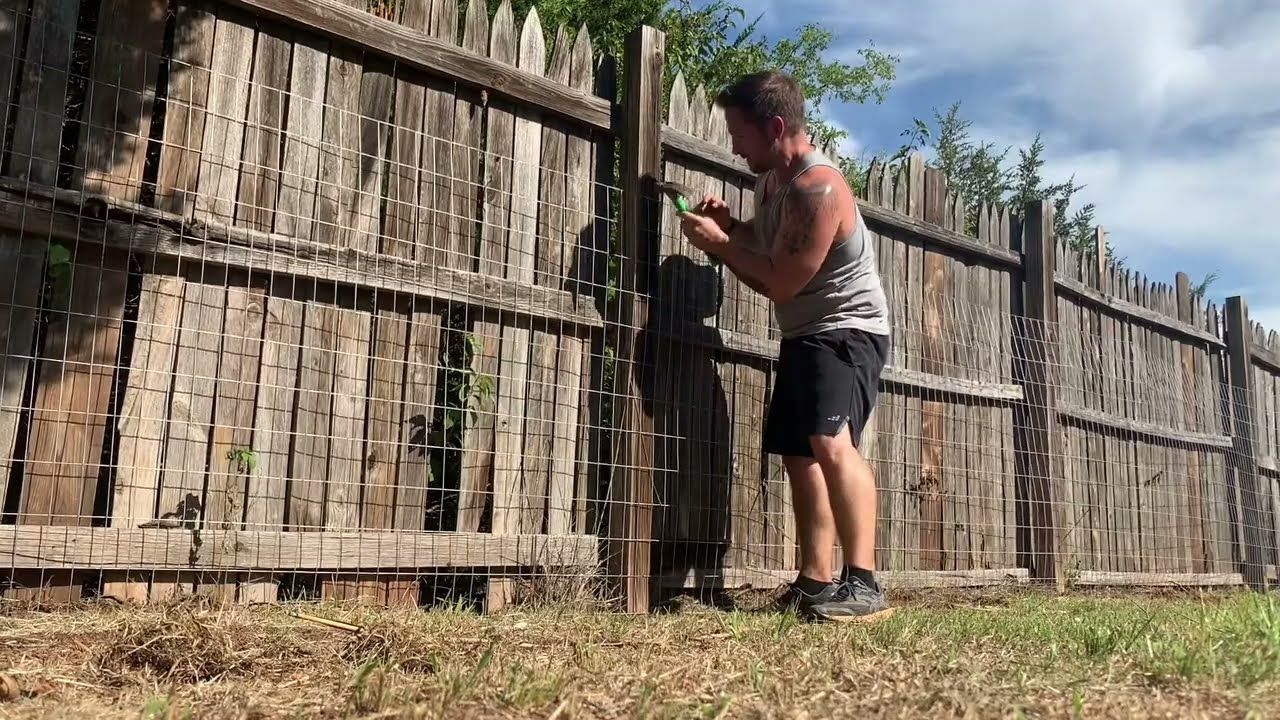
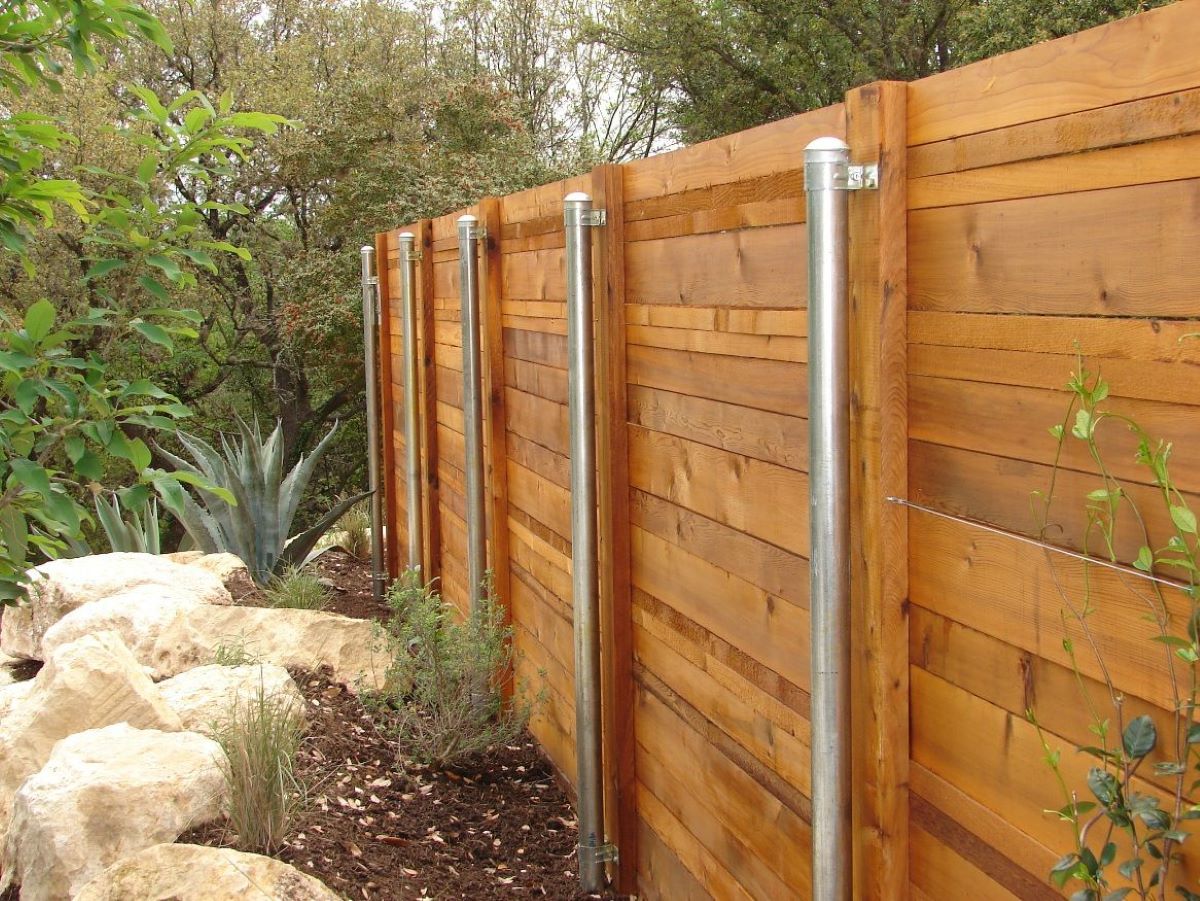
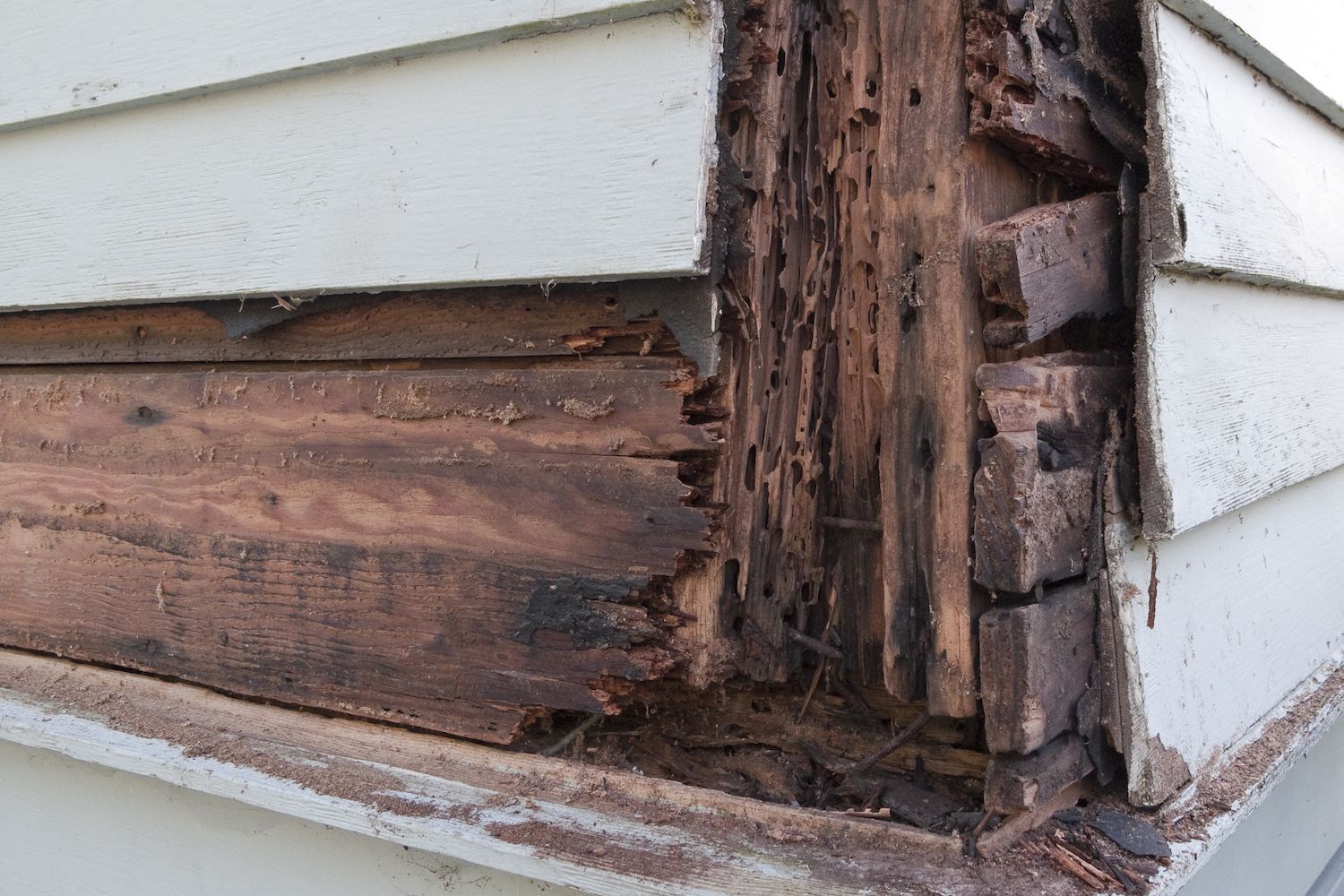
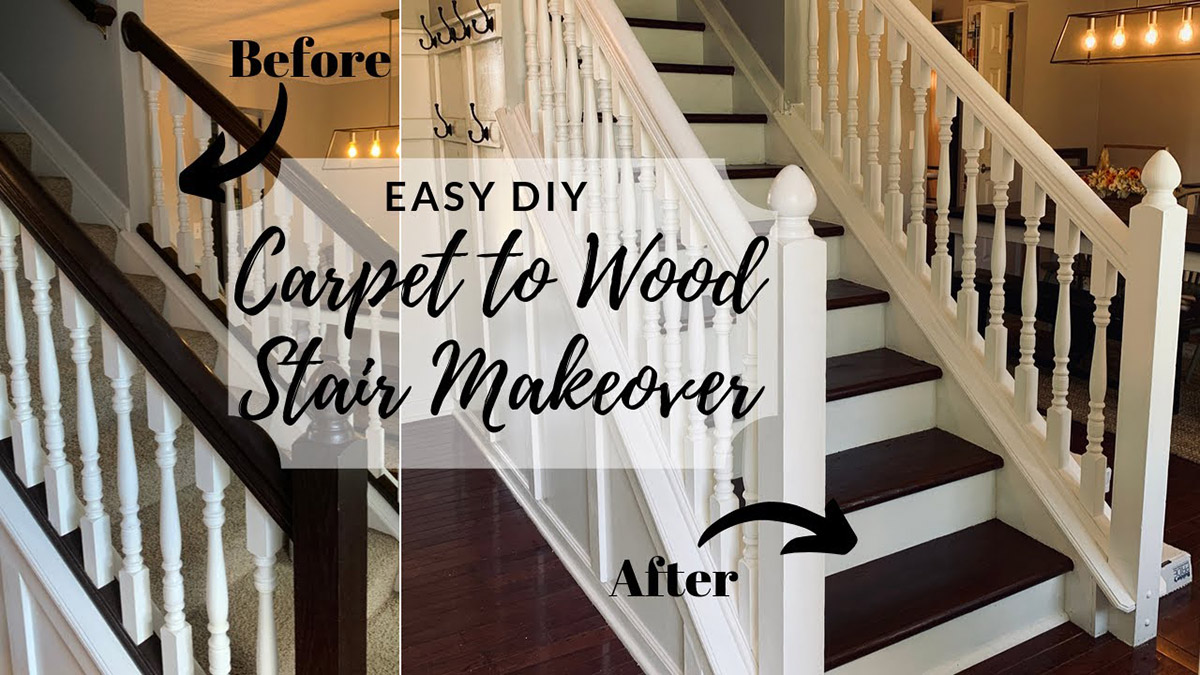
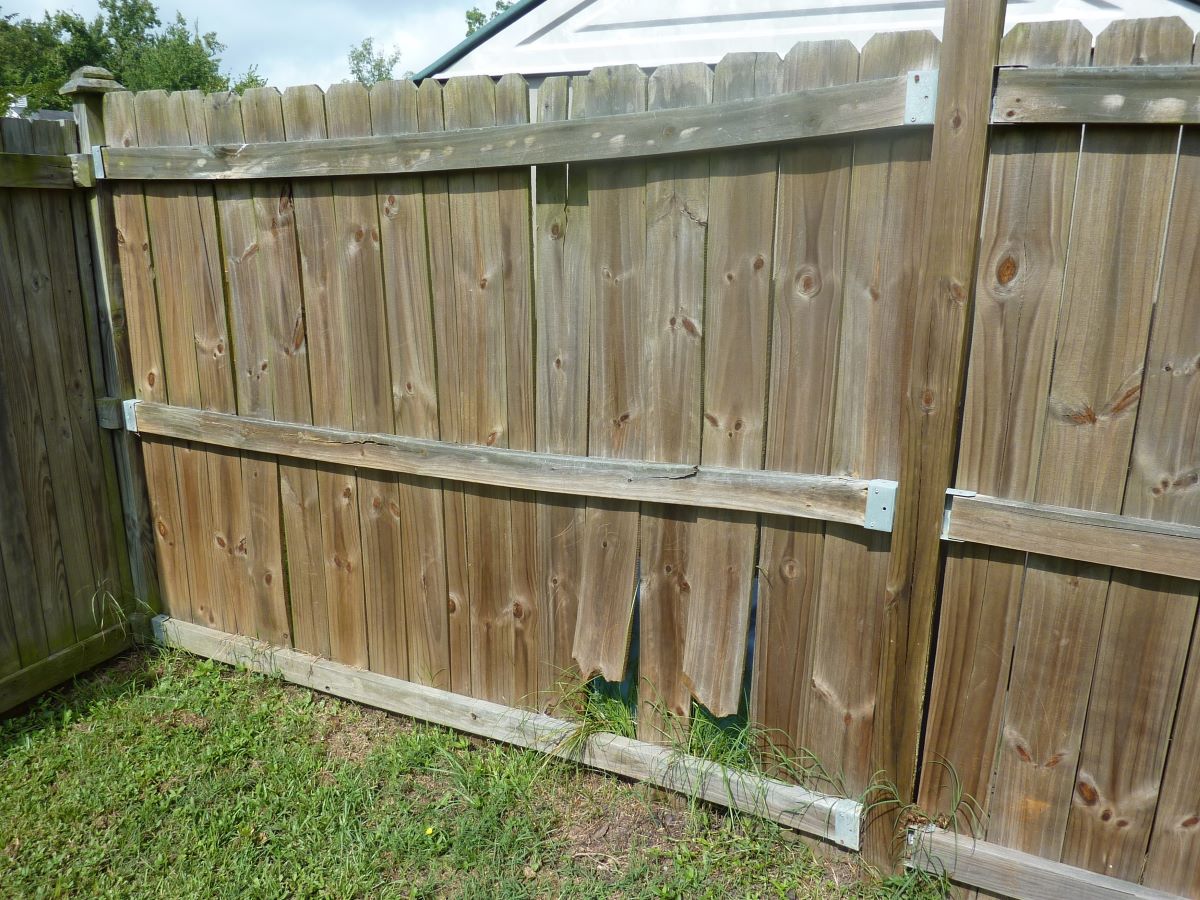
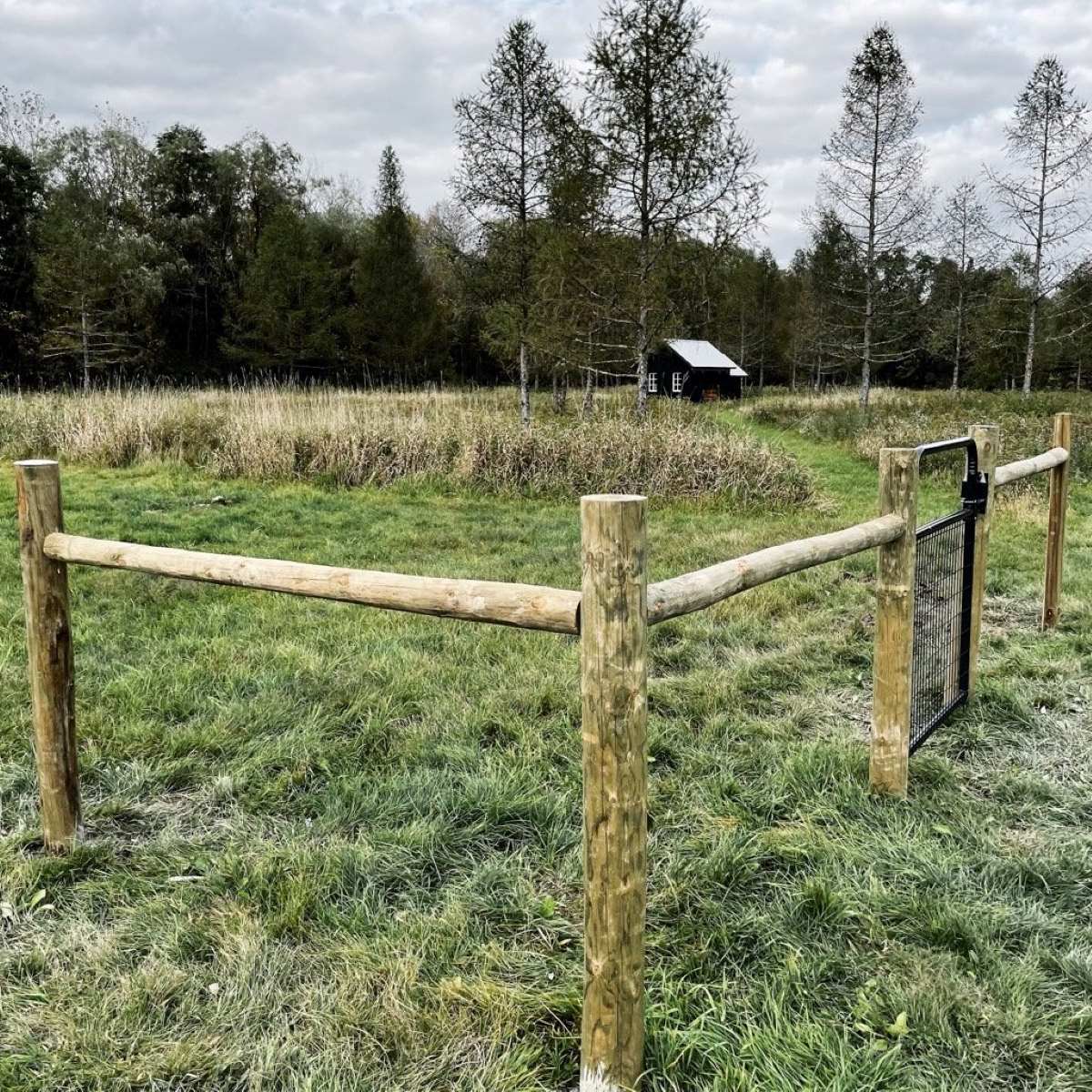

0 thoughts on “How To Replace Wood Fence”